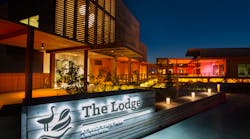Working from the ground up: Basic and applied LED research at the LRC
General illumination may be the ultimate goal for the next generation of white LEDs, but the real quest for LRC researchers is system reliability and rapid life prediction - two factors that may profoundly affect the future of LEDs in lighting.
"Creating a reliable, efficient LED lighting system is no small feat," says Dr Narendran, the LRC's director of research and head of its Solid-State Lighting program. Differences in device geometries, drive current, thermal dissipation, and packaging make no two systems necessarily alike, prompting the need for methods to predict system life that do not require long-term life tests, he says.
The LRC's laboratory-based research into solid-state lighting has focused primarily on understanding the degradation mechanisms of LEDs and developing methods for predicting system life and lumen maintenance.
Narendran's group has explored the challenges of packaging, testing, and evaluating nitride-based devices, and is conducting a series of long-term life tests of high-power LEDs.
Showcasing LED lighting's potential: Field demonstrations and education at the LRC
In addition to basic systems research, LRC experts are working in the field to evaluate and demonstrate which applications work best for LED lighting systems and can benefit from the light source's unique attributes. Narendran notes that the group's LED demonstration studies have focused not only on ways to replace inefficient lamps, but also on creating innovative lighting solutions not possible with traditional light sources.
With sponsorship from manufacturers, utilities, government, and the LRC's own LED lighting industry group (ASSIST), Narendran's team is exploring the use of LEDs in retail display windows, supermarket freezers, elevators, commercial aircraft, and nursing homes through a number of ongoing projects.
The LRC also has placed an emphasis on educating lighting designers, specifiers, architects, and engineers about how best to implement LED lighting. The semiannual LED Lighting Institute offers participants an opportunity to work hands-on with the technology, building their own fixtures and lighting designs, as well as learning about the latest research.
"Many in the lighting applications community find LEDs to be somewhat mysterious, which makes field demonstrations and education an important part of the work that we do," says Narendran. "Every time we can demonstrate the benefits and possibilities of LED lighting, we step that much closer to helping LEDs mature as a mainstream lighting technology."






